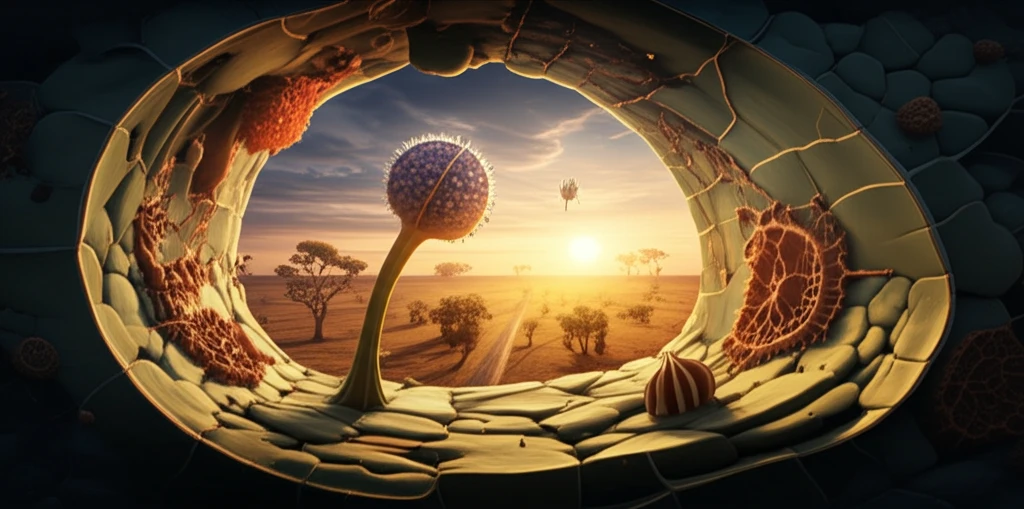
Decoding Nature's Blueprint: How Leaf Anatomy Reveals Secrets of Environmental Adaptation
"Unveiling the hidden world of plant structures and environmental resilience in the Brazilian Cerrado"
The natural world is a complex web of adaptations, where every organism bears the marks of its evolutionary journey. Plants, in particular, showcase remarkable resilience, having evolved diverse strategies to thrive in varied environments. Among these adaptations, the study of plant anatomy and micromorphology offers a lens through which we can decode nature's blueprints.
In the heart of Brazil lies the Cerrado, a vast savanna characterized by its unique vegetation and challenging conditions. Within this biome, Caryocar brasiliense, commonly known as pequi, stands as a testament to nature's ingenuity. This species has adapted to the Cerrado's distinct vegetation types. The leaves of C. brasiliense, often overlooked, hold a wealth of information about the plant's adaptation mechanisms.
Recent research has delved into the anatomical and micromorphological characteristics of C. brasiliense leaves, aiming to uncover how these structures vary across different Cerrado environments. By examining the leaves' microscopic features, scientists can gain insights into the plant's strategies for coping with environmental stressors.
The Microscopic World of Cerrado Leaves

The study focused on C. brasiliense leaves collected from three distinct Cerrado vegetation types: dense, typical, and sparse. These categories reflect variations in plant density, soil composition, and exposure to environmental elements. Using standard anatomical techniques, researchers prepared transverse, longitudinal, and paradermal sections of the median leaflet for detailed examination.
- Epidermis: The leaves exhibit a unistratified epidermis, featuring a thick cuticle on the adaxial (upper) surface.
- Stomata: Paracytic stomata, essential for gas exchange, are predominantly found on the abaxial (lower) surface.
- Trichomes: Multicellular non-glandular trichomes populate the abaxial surface, serving various functions, potentially including defense and water conservation.
- Mesophyll: The mesophyll, responsible for photosynthesis, consists of two to three layers of palisade parenchyma adaxially and spongy parenchyma abaxially.
Environmental Factors
Micromorphometric analyses highlighted significant differences in the thickness of both the adaxial epidermis and spongy parenchyma across the different vegetation types. Notably, leaflets from plants in sparse cerrado environments exhibited the highest averages. This suggests that environmental factors, such as light exposure, water availability, and soil composition, may significantly influence the plants' morphological responses. Factors like the availability of light, the frequency of fires, and the overall nutrient content of the soil appear to have a pronounced effect on leaf structure, impacting water retention and photosynthetic efficiency.
